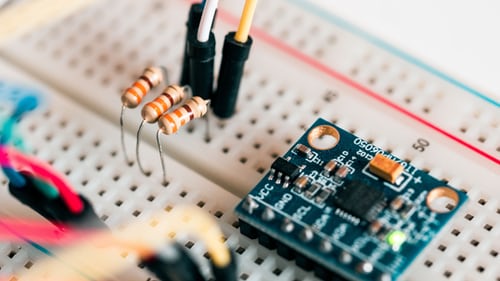Overview
A resistor is a current-limiting element. After the resistor is connected to the circuit, the resistance of the resistor is generally fixed with two pins, which can limit the current through the branch connected to it. The resistance that cannot be changed is called a fixed resistor. Variable resistance is called potentiometer or variable resistor. The ideal resistor is linear, that is, the instantaneous current through the resistor is proportional to the applied instantaneous voltage. Variable resistor for voltage division. On the bare resistor body, one or two movable metal contacts are pressed tightly. The position of the contact determines the resistance between either end of the resistor and the contact.
There is a definite functional relationship between terminal voltage and current. It is a two-terminal device that reflects the ability to transform electrical energy into other forms. It is represented by the letter R and the unit is ohm Ω. Actual devices such as light bulbs, heating wires, resistors, etc. can all be expressed as resistor elements.
The resistance value of a resistor element is generally related to temperature, material, length, and cross-sectional area. The physical quantity that measures the magnitude of resistance affected by temperature is the temperature coefficient, which is defined as the percentage of the resistance value that changes when the temperature increases by 1°C. The main physical characteristic of a resistor is to transform electrical energy into thermal energy. It can also be said that it is an energy-consuming element, and internal energy is generated when current passes through it. Resistors usually play a role in dividing voltage and current in a circuit. For signals, both AC and DC signals can pass through resistors.
Composition
A two-terminal electronic component made of resistive materials with a certain structure and capable of limiting the flow of current in a circuit. The resistance that cannot be changed is called a fixed resistor. Variable resistance is called potentiometer or variable resistor. The ideal resistor is linear, that is, the instantaneous current through the resistor is proportional to the applied instantaneous voltage. Some special resistors, such as thermistors, varistors and sensitive components, have a non-linear relationship between voltage and current. Resistors are the most widely used components in electronic circuits, usually in different series according to power and resistance, for circuit designers to choose. Resistors are mainly used to adjust and stabilize current and voltage in circuits, and can be used as shunts and voltage dividers, and can also be used as circuit matching loads. According to circuit requirements, it can also be used for negative feedback or positive feedback of amplifying circuit, voltage-current conversion, voltage or current protection component when input is overloaded, and can be formed into RC circuit for oscillation, filtering, bypass, differentiation, integration and time constant Components, etc.
Working principle
The resistor is composed of a resistor body, a skeleton and a terminal (the resistor body and the skeleton of a solid-core resistor are combined into one), and it is the resistor body that determines the resistance. For a resistor body with uniform cross-section, the resistance value is

In the formula, ρ is the resistivity of the resistive material (Ohm·cm); L is the length of the resistor (cm); A is the cross-sectional area of the resistor (square centimeter).
The thickness d of the thin film resistor is very small, it is difficult to measure accurately, and ρ changes with the thickness, so it is regarded as a constant related to the thin film material, which is called the film resistance. In fact, it is the resistance value of the square film, so it is also called square resistance (Euro/square). For uniform film

Where W is the width of the film (cm). Usually Rs should be within a limited range, too much Rs will affect the stability of the resistor performance. Therefore, the cylindrical resistor body uses the groove method, and the planar resistor body uses the method of etching the circuitous pattern to expand its resistance range and fine-tune the resistance value.
The volt-ampere characteristic is a graphical curve to show the relationship between the voltage and current at the end of the resistor. When the voltage and current are proportional (the characteristic is a straight line), it is called a linear resistance, otherwise it is called a non-linear resistance.



No comments yet